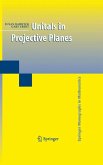This profusely illustrated book is arranged in a logical order appropriate for a textbook on the geometry of flexagons. It is written so that it can be enjoyed at both the recreational mathematics level, and at the serious mathematics level. The only prerequisite is some knowledge of elementary geometry, including properties of polygons. A feature of the book is a compendium of over 100 nets for making paper models of some of the more interesting flexagons, chosen to complement the text. These are accurately drawn and reproduced at half full size. Many of the nets have not previously been published. Instructions for assembling and manipulating the flexagons are included.
Dieser Download kann aus rechtlichen Gründen nur mit Rechnungsadresse in A, B, BG, CY, CZ, D, DK, EW, E, FIN, F, GR, HR, H, IRL, I, LT, L, LR, M, NL, PL, P, R, S, SLO, SK ausgeliefert werden.
Hinweis: Dieser Artikel kann nur an eine deutsche Lieferadresse ausgeliefert werden.
"This book comes across as a sort of encyclopedia or a classification of flexagons. ... The more serious researcher ... will find this book an amazing resource for various kinds of flexagons. ... I'm sure this book will remain a reference book of choice in the subject of flexagons for a long time. ... If you are looking for ... 'Encyclopedia of Flexagons' this flexagon book appears to be the best on the market." (Collin Carbno, The Mathematical Association of America, December, 2009)









